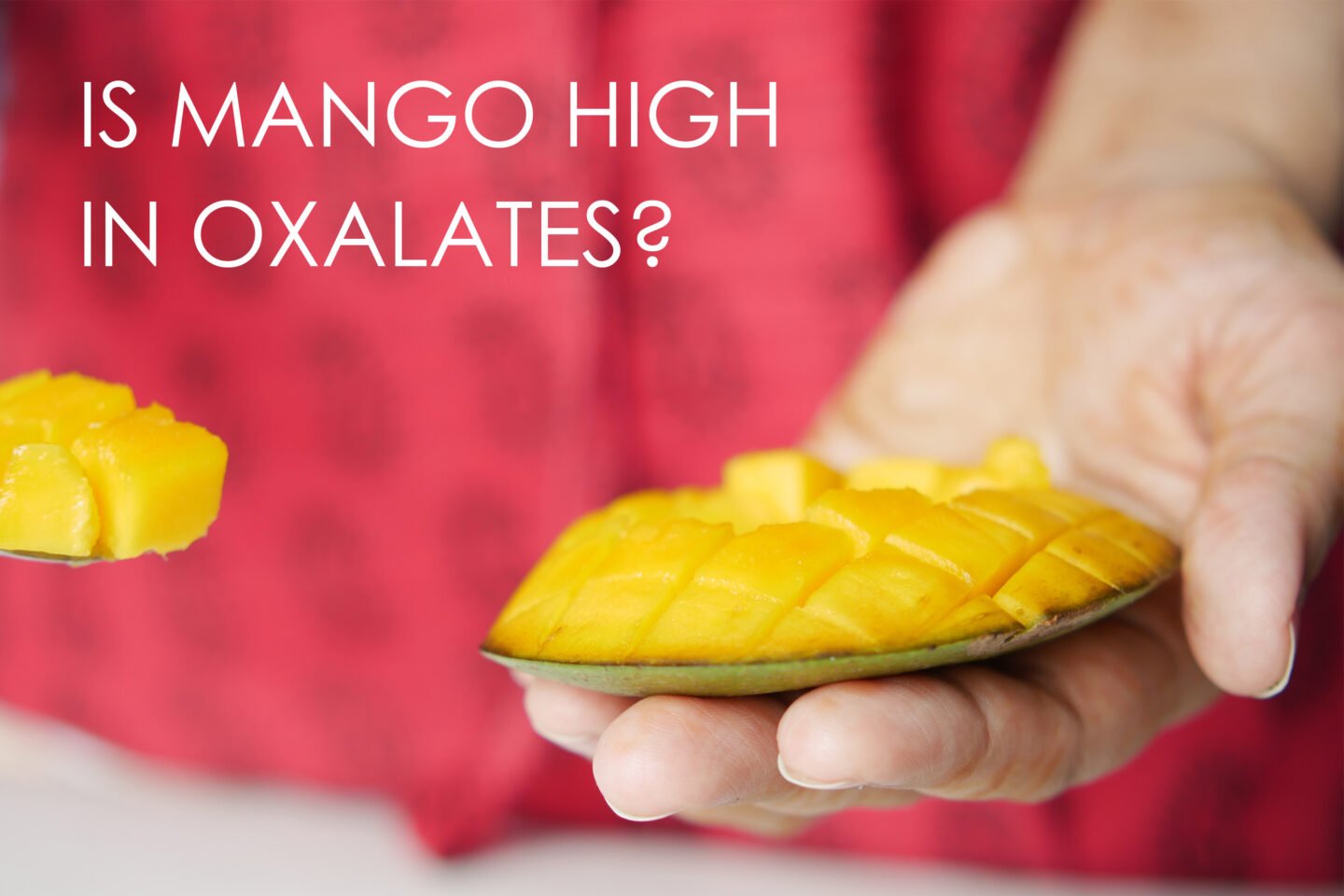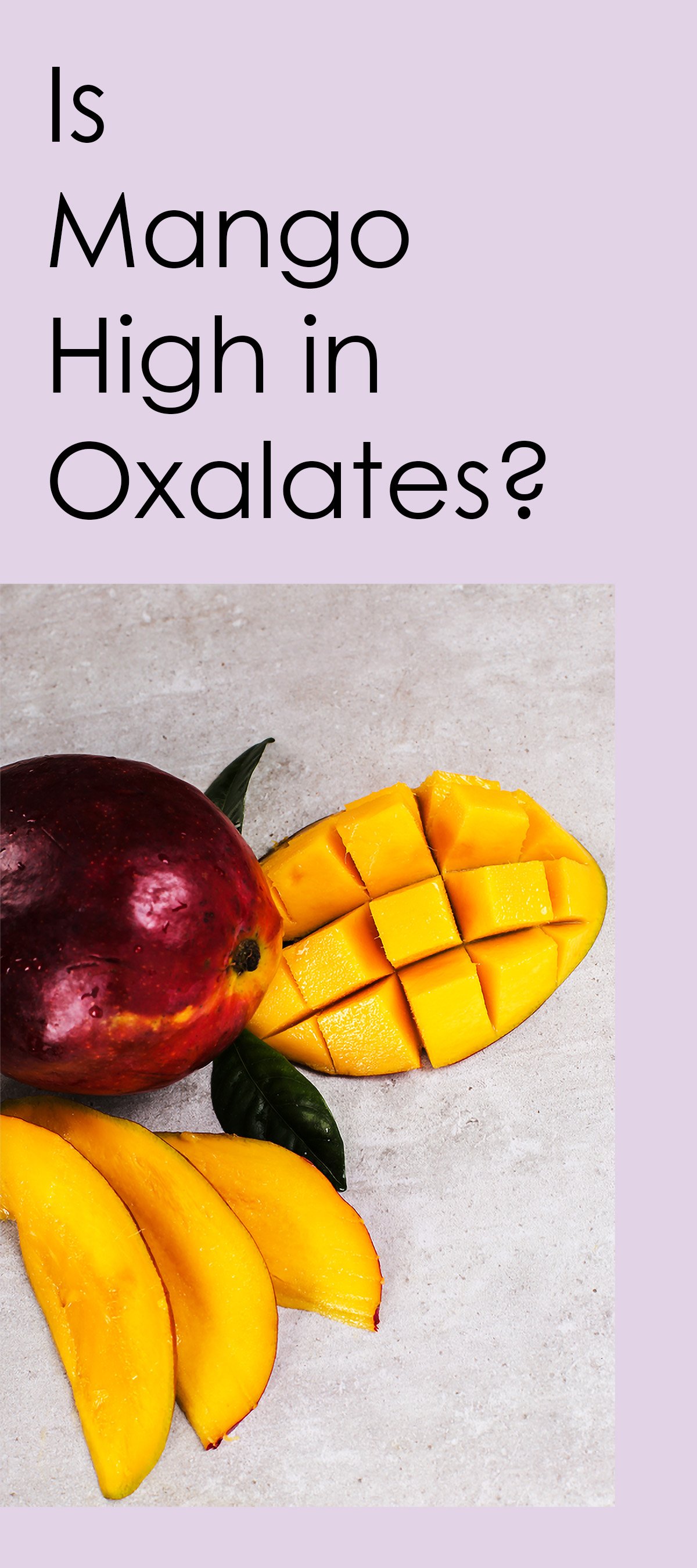Oxalates are a naturally occurring compound that is found in all of our plant-based foods. This means that fruits and vegetables all have some level of oxalates in them. Generally speaking, eating foods high in oxalates isn't a huge deal because they are suitable for our bodies.

While eating foods high in oxalate may not be a problem for most people, eating high-oxalate foods may not be a good idea if you're prone to kidney stones or kidney disease.
One of the main components in the most common type of kidney stone is oxalates. Since oxalates can be found in all of our vegetables and fruits, it can be hard to know which ones you can and can't eat when sticking to a low oxalate diet. If you love eating mango, you're probably wondering if mango is high in oxalates.
Mango is not high in oxalates. In each mango, there's only about one mg of oxalate. That's considered to be a medium-to-low rate of oxalate. So, even if you're sticking to a low-oxalate diet, you can still eat mangos!
But, since you're eating fewer oxalates than the average person, you may want to limit the number of mangos you're eating if you're eating other foods that have a higher amount of oxalates.
Table of Contents
Are Mangos Good for You?
Mangos are good for you! These juicy and delicious fruits are relatively low in calories and are a great substitute for cake or ice cream when you're craving something sweet. Plus, mangos have a decent amount of potassium, making them a great source of much-needed potassium if you don't want to keep eating bananas every day.
Another great thing about mangos is that they're not overly acidic fruit. Their pH level is still on the acidic scale, but it's close enough to neutral that most people shouldn't have any issues eating them.
Is Mango Juice High in Oxalates?
With many fruits and vegetables, the compounds tend to stay the same when you're eating the fruit or drinking the juice. The same goes for mangos. Mango juice has a low to medium amount of oxalates, just like the traditional fruit. One cup of mango juice has one mg of oxalates.

What Other Foods Have a Similar Oxalate Level to Mangos?
There are plenty of fruits that have about one mg of oxalates, just like mangos. Here are a few options if you don't want to eat mangos every day:
- Apples
- Cantaloupe
- Honeydew Melon
- Papaya
- Watermelon
RELATED: Is Mango High In Potassium?
What is a Normal Amount of Oxalates Compared to a Low Amount?
It's hard to pinpoint exactly what a "normal" amount of oxalates is, but it's thought that most average adults consume approximately 200 to 300 mg of oxalates per day. If you don't have kidney disease or aren't prone to getting kidney stones, you most likely don't need to worry about eating a low oxalate diet.
For those who suffer from those conditions, you may need to focus on limiting the amount of oxalates you're consuming. Many physicians will recommend that people stick to no more than 100 mg of oxalates per day, while others are far more strict and limit patients to 50 mg of oxalates per day.
There are some more complicated situations where people have to stick to 40 mg of oxalates per day.
How Many Mg of Oxalates is Considered High?
For a food to be considered high in oxalates, it has to have ten or more mg of oxalates per serving. To give you an idea of high oxalate fruits you may want to avoid when having kidney disease or following a low oxalate diet, here are some of the highest-oxalate fruits.
- One cup of raspberries: 48 mg
- One avocado: 19 mg
- One half of a grapefruit: 12 mg
- One kiwi: 16 mg
RELATED: Is Vegan & Vegetarian Sushi Healthy?
Negative Side Effects of a High-Oxalate Diet
Even if you don't currently have kidney disease or suffer from regular kidney stones, there are still adverse effects that can occur when you eat a high-oxalate diet. The first side effect is that it puts you at increased risk for kidney stones.
When you have a high amount of oxalate in your system, the greater the chances it will bind to calcium and form kidney stones. If you're on antibiotics for whatever reason, a high amount of oxalates in your body can prevent them from working correctly. Oxalates may not be fully absorbed due to the antibiotics decreasing the good bacteria in your gut.
Some of the Best Ways to Eat More Mango
Since mango is quite low in oxalates, you can eat quite a bit of it without coming close to the amount in other fruits. If you're thinking of eating more mango, here are some fun and unique ways to incorporate mango into your diet.
Mango roll-ups make a delicious snack or lunch. You can roll slices of mango up in your choice of deli meat. I know it may sound strange, but it's fantastic. My suggestion is to use ham or turkey. Feel free to experiment with other deli meats too!
If you have time to make pancakes or waffles in the morning, choose mangos instead of strawberries or blueberries. The sweetness pairs well with the pancake or waffle mix, and you may never go back to berries on your breakfast again.
Make your own mango popsicles at home. While you can buy mango popsicles at the store, making them at home is not only fun, but you know exactly what is in your food. You'll need to puree the mangos and then add them to popsicle trays. Insert a popsicle stick and freeze. In an hour or so, you'll have a delicious treat you can enjoy as a snack or dessert.
One of my favorite ways to eat a mango is to cut it up into pieces or slices and then top it with chili powder. The combination of the mango's spicy, savory, and sweet flavors is the perfect snack for any time of the day.
